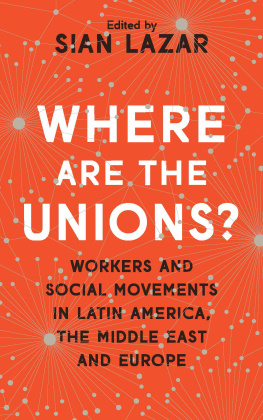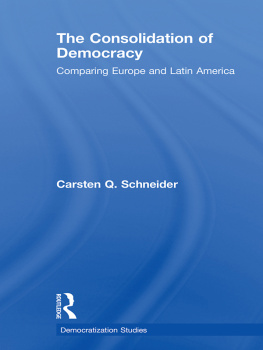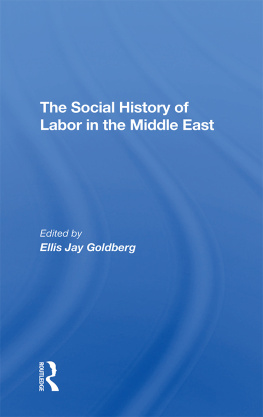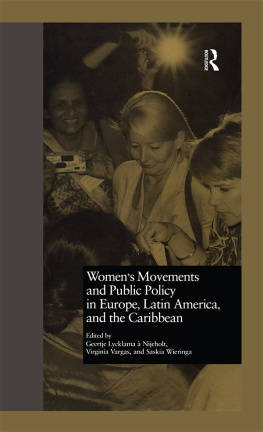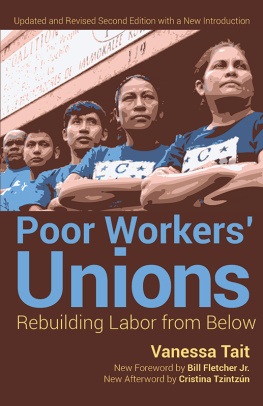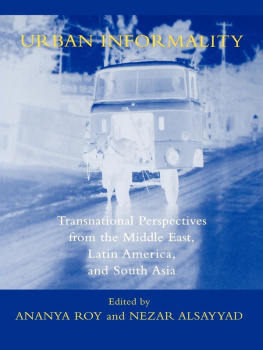About the editor
Sian Lazar is a lecturer in the Division of Social Anthropology at the University of Cambridge. She is the author of El Alto, Rebel City: Self and Citizenship in Andean Bolivia (2008) and the editor of The Anthropology of Citizenship: A Reader (2013). She has conducted field research in Bolivia and Argentina, with a focus on collective politics and political subjectivity.
WHERE ARE THE UNIONS?
WORKERS AND SOCIAL MOVEMENTS IN LATIN AMERICA, THE MIDDLE EAST AND EUROPE
edited by Sian Lazar
Where Are The Unions? Workers and Social Movements in Latin America, the Middle East and Europe was first published in 2017 by Zed Books Ltd, The Foundry, 17 Oval Way, London SE11 5RR, UK.
www.zedbooks.net
Editorial copyright Sian Lazar 2017
Copyright in this collection Zed Books 2017
The right of Sian Lazar to be identified as the editor of this work has been asserted by her in accordance with the Copyright, Designs and Patents Act, 1988.
Typeset in Plantin and Kievit by Swales & Willis Ltd, Exeter, Devon
Index by ed.emery@thefreeuniversity.net
Cover design by Alice Marwick
All rights reserved. No part of this publication may be reproduced, stored in a retrieval system or transmitted in any form or by any means, electronic, mechanical, photocopying or otherwise, without the prior permission of Zed Books Ltd.
A catalogue record for this book is available from the British Library.
ISBN 978-1-78360-990-1 hb
ISBN 978-1-78360-989-5 pb
ISBN 978-1-78360-992-5 pdf
ISBN 978-1-78360-991-8 epub
ISBN 978-1-78360-993-2 mobi
CONTENTS
This collection began life as a conference in Cambridge, called Bread, Freedom and Social Justice: Organized workers and mass mobilisations in the Arab World, Europe and Latin America, which I co-organised with Anne Alexander in 2014. I am immensely grateful to Anne for all her hard work in organising that conference, bringing in many of the contributors, translating between Arabic and English (often simultaneously) and, not least, for her intellectual input in framing the conference and subsequent analysis. The conference was supported by the Centre for Research in the Arts, Social Sciences and Humanities (CRASSH) and the Division of Social Anthropology at the University of Cambridge, and the Institute of Latin American Studies of the University of London, and I am very thankful to those institutions for their financial and administrative support. A British Academy Mid-Career Fellowship provided me with the time to prepare this collection and some financial assistance for the translators, Yassmin Ahmed, Lucy McMahon and Patrick OHare. I am grateful to them for their sterling work, sometimes at short notice. I thank the authors of the chapters, and pay tribute to them for their ability to live a life consistent with their politics, often combining activism with academic work, but without sacrificing intellectual rigour.
2011 was a remarkable year for spectacular mass protest. A tragic act of self-immolation by the street vendor Mohamed Bouazizi in front of the provincial headquarters of a Tunisian town sparked off protests that led to the resignation and flight of President Ben Ali four weeks later, on January 2011 . The effects of those mobilisations spread out of Tunisia, eventually to cross the Middle East and North African (MENA) region, including the countries of Egypt, Libya, Syria, Bahrain and Yemen. Most famously, the -day occupation of Tahrir Square in Cairo led to the resignation of President Hosni Mubarak in February 2011 . Then, inspired by the Tahrir Square occupation, Spanish groups occupied city squares from May until early August in some cases. Inspired by all these, in September, young people in New York occupied Zuccotti Park in the centre of the financial district and called themselves Occupy Wall Street. Similar groups developed in other US cities, and the protest expanded and crossed (back) into Europe on October, when mobilisations occurred globally in support of the Occupy movement. Occupations developed in multiple cities, especially in the US and Canada, Europe and Australia. Many felt it at the time to be a global movement, with a unified slogan we are the % and common symbols such as the tents and the Anonymous mask.
The first wave of academic and journalistic commentary often partook of the euphoria of the protests themselves, emphasising elements such as the youth of the occupiers, the role of social media in calling people to the squares in Cairo as much as in Madrid or New York, the practices of creativity, performance and democratic prefiguration to be found in the occupations themselves, and the challenge of the occupiers to politics as usual. In this space of politics as usual protesters and commentators lumped together traditional political parties or governing regimes, dictatorial presidents, trade unions, corporate interests and other governing elites. They were all, it seems, characterised by verticalist forms of leadership, corruption, bureaucracy, age and irrelevance.
By December, many of the Occupy camps had disappeared, either as a direct result of state repression or because they gradually fizzled out and protesters turned to more localised forms of action, such as neighbourhood activism. Those of us who had been observing the protests or participating in them (or both) turned to questions of how to understand the mobilisations, and think about what might come next. Some of us worried that the Occupy mode of protest itself exemplified the ephemerality of spectacular protest, and confirmed the worst fears of those who had criticised the leaderless protesters for being impractical, utopic, without a programme or overly idealistic about the possibility of social change through horizontally organised collective action.
We had been here before: in what has come to be known as the global justice movement, moments of spectacular effervescence included the Zapatista uprising of January 1994 , the battle of Seattle in 1999 , protests against the G in Genoa in 2001 , and the World Social Forums and their spin-offs in the 2000 s. In Latin America, spectacular protests against corrupt governing regimes took place in Venezuela in 1989 , Bolivia in 2000 2005 , Argentina in 2001 and Ecuador in the 1990 s. Yet, curiously, the effects in these countries seemed not to be quite so ephemeral, as leftist regimes were elected to state power in Venezuela in 1998 , Bolivia in 2005 , Ecuador in 2006 , Argentina in 2003 and Brazil in 2002 , in direct relation to mass protests and social movement action more broadly, to create what has become known as the pink tide, or turn to the left in the region.
With some distance from the 2011 wave of protests, we can see similarities and differences between them and earlier waves, in Europe, North America and Latin America. One of the most important similarities between the Latin American uprisings, the Arab revolutions and the contemporary European movements of the indignados has been onlookers tendency to underplay the role of organised labour in the mobilisations and their aftermath. And yet, workers strikes and protests played a critical role in propelling the mass movements in Latin America into state power, destabilised dictatorships in Tunisia and Egypt, and continue to challenge austerity governments across Europe.
Still, their role is significantly underestimated in narratives of these events. This book redresses that oversight and explores the prospects for worker mobilisation and the production of alternative worlds in the aftermath of the spectacular uprisings; as workers, migrants, the unemployed and students try to define political and social alternatives to neoliberalism and austerity. We acknowledge also the importance of taking a longer historical narrative approach than was common in the immediate aftermath of the Occupy movements in particular. This in turn enables us to overcome concerns about ephemerality: from almost spontaneous uprisings of youth discontent brought into effervescent practice by calls on social media, occupations start to look like one event in a long trajectory of day to day organisation, strikes and protest culture in the longer term. Tahrir Square is the outcome of not only the We Are All Khaled Said Facebook page, but also the wave of strikes that began in 2005 (Alexander and Bassiouny, this volume); the Argentine crisis of December 2001 was immediately provoked by bank controls and food riots, but was also an outcome of longer-term organisation at the level of the neighbourhood, as unionists and local residents formed piquetero communities and action groups (Manzano), and so on.


